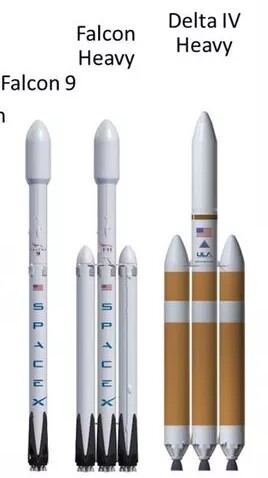Discussion
Sorry, couldn't find a previous thread on the subject of Arianespace launchers...
Arianespace has split its third order of Vega rockets from Italy’s Avio between old and new versions of the solid-fueled booster, as officials prepare to build a final batch of around 18 Ariane 5 rockets before switching to the next-generation Ariane 6 in the early 2020s.
https://spaceflightnow.com/2017/09/28/arianespace-...
Arianespace has split its third order of Vega rockets from Italy’s Avio between old and new versions of the solid-fueled booster, as officials prepare to build a final batch of around 18 Ariane 5 rockets before switching to the next-generation Ariane 6 in the early 2020s.
https://spaceflightnow.com/2017/09/28/arianespace-...
New version of the Vulcain angine for Ariane VI has undergone a successful test fire
http://www.esa.int/Our_Activities/Space_Transporta...
http://www.esa.int/Our_Activities/Space_Transporta...
Beati Dogu said:
I can't help feeling that SpaceX in particular are going to eat their lunch.
I am surprised that the established rocket builders aren't following SpaceX's lead and designing recoverable rockets, instead they seem to be continuing down the same path, eventually their launch systems will just be too expensive and they'll lose out to the cheaper companies like SpaxeX and eventually Blue Origin. Maybe - but not for a while. SpaceX and Blue Origin (who have orbited absolutely nothing yet) are only two out of at least 20 rocket building organisations world wide.
I think they are the harbingers of what is to come, but it will be a decade or two before fully reusable first stages become the norm.
I think they are the harbingers of what is to come, but it will be a decade or two before fully reusable first stages become the norm.
Approval given for Ariane 6 the proceed - still no sign of anything innovative like reusability 
http://www.esa.int/Our_Activities/Space_Transporta...

http://www.esa.int/Our_Activities/Space_Transporta...
New solid motor for Vega C and Ariane 6 being tested this week
http://www.esa.int/Our_Activities/Space_Transporta...
http://www.esa.int/Our_Activities/Space_Transporta...
Beati Dogu said:
I'm not a fan of sold rockets, but the trouble with liquid hydrogen as the main fuel is that it doesn't have a lot of "grunt" to get a heavy rocket off the pad.
And the structural mass of a large 1st stage needed due to the low density of LH2 also counts against it. Much more sensible to use a higher density fuel such as RP1 and keep the cryogenic fuel for the upper stagesEdited by Beati Dogu on Monday 9th July 21:49
The National Reconnaissance Office wanted a heavy lift rocket to launch their big spy satellites. One based on a simplified & cheaper Shuttle main engine made sense at the time I suppose.
ULA do use either 2 or 4 SRBs on the "Delta 4 Medium+", but clearly a 3 core rocket is way more powerful once it gets away .
The Delta 4 Heavy can lift twice as much mass into orbit as the most powerful Delta 4 Medium+ with 4 SRBs.
At around $400m a pop though it's not exactly a budget option.
ULA do use either 2 or 4 SRBs on the "Delta 4 Medium+", but clearly a 3 core rocket is way more powerful once it gets away .
The Delta 4 Heavy can lift twice as much mass into orbit as the most powerful Delta 4 Medium+ with 4 SRBs.
At around $400m a pop though it's not exactly a budget option.
MartG said:
Looking at the relative sizes of D4H and the Lox/RP1 fuelled Falcon Heavy...

...it is apparent the Delta is the same height but a lot 'fatter' yet carries less than half the payload - 28,790kg to LEO compared to FH's 63,800
Thanks.
...it is apparent the Delta is the same height but a lot 'fatter' yet carries less than half the payload - 28,790kg to LEO compared to FH's 63,800
That's what I was getting at. The decision to use LOX/H for all the stages shows that there is a performance shortfall.
Hydrogen and Methane come at the cost of bulkier tanks unfortunately. Hence big-ass rockets like SLS, BFR and New Glenn.
Interestingly, ULA's forthcoming Vulcan rocket will have either :
A 18 ft diameter methane powered first stage, based off the tanks from the Delta 4.
or..
A 12.5 ft diameter kerosene powered first stage. The same diameter (and fuel) as Atlas V.
The second stage will use hydrogen and is an upgraded version of that used on the Atlas V already.
Interestingly, ULA's forthcoming Vulcan rocket will have either :
A 18 ft diameter methane powered first stage, based off the tanks from the Delta 4.
or..
A 12.5 ft diameter kerosene powered first stage. The same diameter (and fuel) as Atlas V.
The second stage will use hydrogen and is an upgraded version of that used on the Atlas V already.
Gassing Station | Science! | Top of Page | What's New | My Stuff




